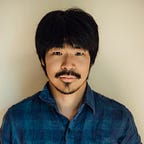Arirang
“Arirang… crossing over Arirang Pass, my darling who abandoned me here, her feet will pain her before even having walked three miles.”
— From the Korean folk song ‘Arirang’
Among vague childhood recollections, there is one that keeps coming back to me: the unlikely encounter with a Soviet officer one Sunday morning at church, probably not long after the collapse of the Soviet Union. He gifted me a red hammer and sickle badge that was pinned onto his uniform among many others. I never learned, or perhaps never understood, the reason for him to be there, in a Korean Presbyterian church in Buenos Aires, but this event (or its memory) has certainly become part of who I am. I was too young to care about politics, yet the fall of the Berlin Wall and the collapse of the Soviet Union were all there was to see on newspapers and TV. These events were taking place as I became conscious of the concepts of race, nationality, and nation-states, their arbitrariness, and the involuntary construction of my identity within these sociocultural parameters. I was the son of Korean immigrants, born in the USA and raised in Argentina, unable to escape the permanent foreignness that comes with diaspora.
I grew up surrounded by stories about an impoverished Korea enduring colonialism and war—a life of hardship and struggle in a distant land that I had never visited, yet was paradoxically an inextricable part of my memory. It was indeed a reimagined memory that I subconsciously constructed through anecdotes and caption-less family photos. Nonetheless, it was a memory born from a shared past. The North Korea border — half a century of national sorrow; picnics by the River Han, the background setting of my parents’ youth; people running through the Han River Bridge to escape the northern occupation of Seoul only for it to be bombed by the South Korean government without warning, leaving a thousand dead; tombs of distant ancestors who were once kings of Silla, one of the Three Kingdoms of Korea; the many massacres by government troops and US forces in order to silence communist dissidents in South Korea during and after the war; the furious economic development — a flawed rags-to-riches tale that left many people behind, marginalized and driven to suicide; migrants in search of a better future for their children, and their struggle starting a new life in a country that had never encountered an Asian face before.
With rapid development in recent decades, the country that my parents once called home is long gone, but that imagined impression of Korea still exists in my memory. The present-day Korea, the physical one now renown for its technology and popular culture, is a country that feels vaguely familiar but mostly foreign.
By getting lost in the labyrinth of memory, this project traces a poetic story of migration: the remembrance of a past that I’ve never seen, far away yet essential to my life.
This story was created for the 2017 Joop Swart Masterclass, which has been organized by the World Press Photo Foundation every year since 1994 and has established itself as one of the most prestigious events of its kind. Its goal is to bring together some of the most experienced individuals in photojournalism with 12 young, promising photographers to share and pass on their knowledge and experience. Learn how to apply.
If you liked this article, click and hold 👏 below so others will see it.
